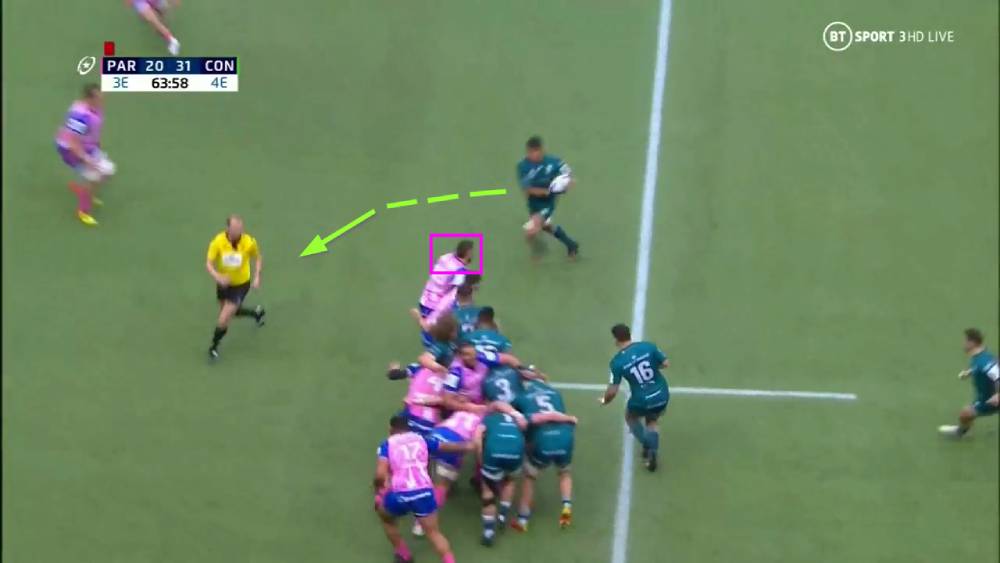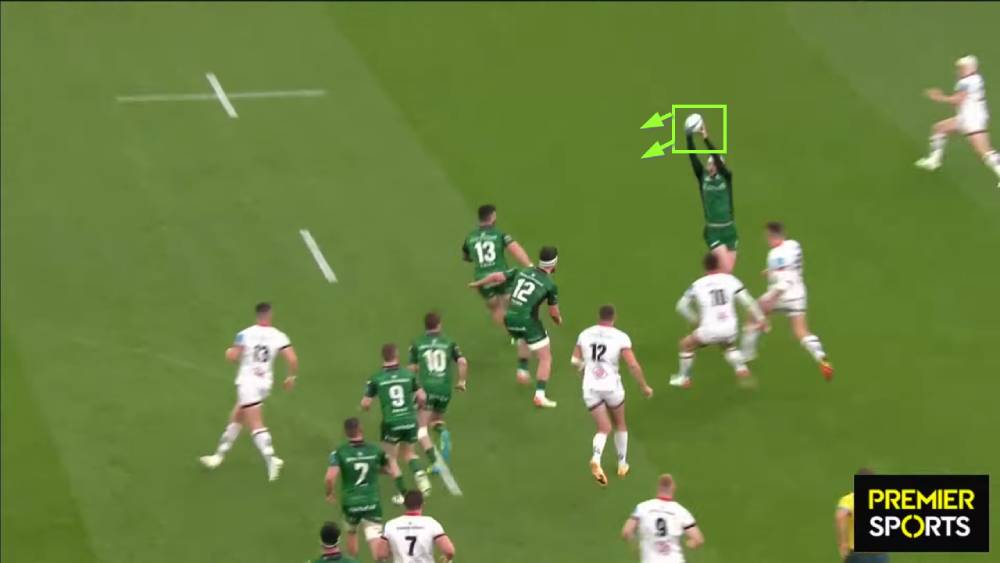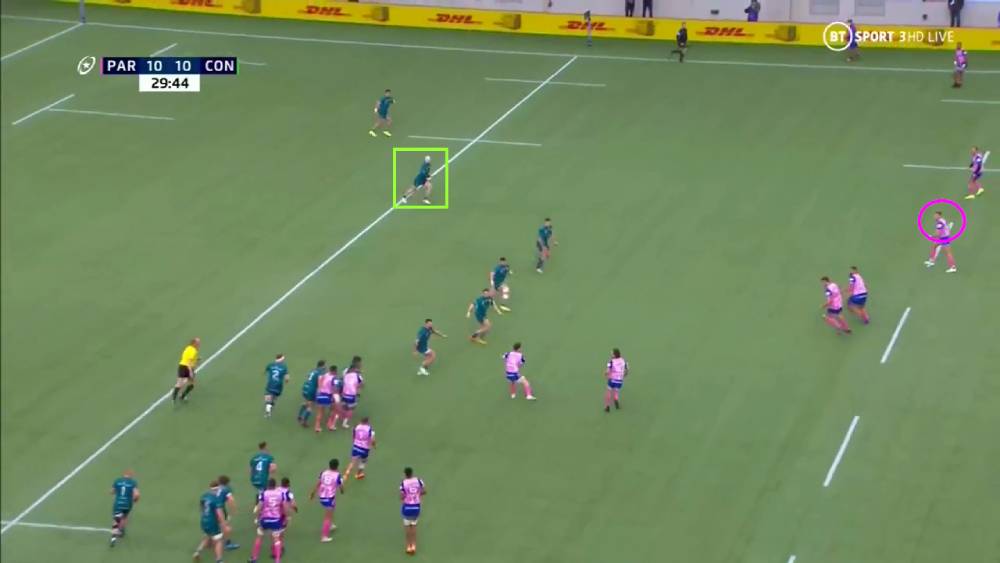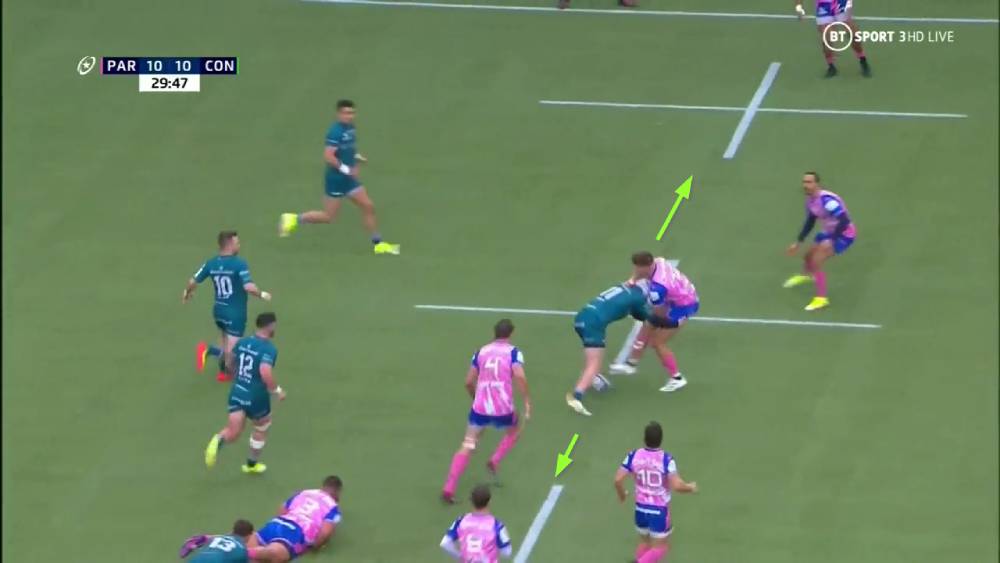Bigger is not always better – ask Cheslin Kolbe or Shane Williams, and they will tell you.
It is the same for players touting their wares abroad. The quality of the destination is more important than the size or marketing allure of the club.
So much depends on finding the right environment, especially for an Australian still harbouring ambitions of returning home to represent the green and gold jersey.
In an article a few weeks ago, I looked at how the Exeter and London Irish clubs in England have become centres of excellence for Australian rugby exports.
Neither of those clubs are as big on ‘image’ or ‘branding’ as some others in the same league, and both attracted their Australians before they achieved the major portion of their success, rather than after it.
It is easy to overlook the diamond in the dirt. Only a few short months ago, World Cup-winning coach Jake White made the following comment before watching his new charges in the URC, the Bulls, go down to Irish province Connacht 34-7:
“When they [Irish players] don’t get contracted by the big unions they go down to the small provinces and then obviously find a way in which they can get noticed by the bigger provinces.”
The superficial view that Connacht are somehow the poor relations of Irish rugby is convincingly spiked by the accomplishments of the ‘fourth province’ in the Emerald Isle, winning the [then] Pro 14 back in 2015-16 and more latterly, qualifying for the knockout stages of the European Champions Cup in the current 2021-22 season.
Connacht do it all without any star names, or the cachet of their bigger brothers in Leinster and Munster. Their success is based on the cohesion of their environment, whether it was under the careful stewardship of Pat Lam back in their championship-winning season, or Australian Andy Friend now. Friend was originally Eddie Jones’ skills coach at the Brumbies in the early noughties.
Both Lam and Friend coach a style with which it is easy for the Australian rugby export to identify:
“We’ve played the Connacht way. This year we came in and said let’s put a few labels to that. Every time we train, every time we play, we want to see these three things. The three things are ‘Fast’: we want to be a team that plays with tempo because historically that’s when Connacht was at their best and we’re a different type of squad to other squads.
“We often come up against bigger men, bigger squads but if we can move them around like we did against the Bulls we believe that can become our advantage… fast seems to suit the way we play.
“The second part is relentless, which I think is very much a West of Ireland trait, a Connacht trait. To live in this part of the world you’ve got to be relentless. You’ve got to be tough, you’ve got to keep going, you’ve got to find a way to do something different.
“The third part of that identity is adaptable… We live in an environment where the weather can do something in the first half and something else in the second half, so we need to be able to adapt. We play against teams from South Africa, teams from Scotland, teams from Wales.
“We need to be able to adapt to the different game styles.”
Those three words – fast, relentless and adaptable – could just as easily be used to describe Dave Rennie’s plan for the Wallabies. They suit the Australian rugby mentality as well as any three words in the English dictionary.
Not all Australians find the right home in Europe. Quade Cooper was never a good fit at Toulon, and Nic White had to move from Montpellier to Exeter to take his game to the next level.
The latest evidence suggests that a player who should by rights be one of top two hookers available to Rennie, Tolu Latu, is struggling with Stade Français in France. The on and off-field disciplinary issues with which he left Australia remain unresolved in his time with the Parisian glamour boys.
Latu has so many positives to offer: he is probably Australia’s most accurate thrower to the back half of the lineout, he is an expert maul navigator and a real pest at defensive breakdowns. But it is undermined by his lack of discipline.
In the recent Champions Cup match between Stade and Connacht, he managed to rile up a referee as unflappable as Wayne Barnes. Barnes penalized him three times at the breakdown, and Latu’s discipline broke up. The ex-Waratah comprehensively blew his fuse, first earning a yellow card for a late hit at cleanout:
No sooner had Latu returned to the action than a second incident occurred. He talked back after the English official pinged him for not supporting his own bodyweight after the tackle:
As Barnes explained on the ref mic, “He’s looked at me and said, ‘Fucking hell’, and then, ‘I got the fucking ball’.” Latu promptly received another yellow, upgraded to red because it was for a second offence.
On the same weekend, ex-Queensland rake Brandon Paenga-Amosa was helping Montpellier demolish the Exeter scrum en route to their own qualification for the knockout stages of the Champions Cup:
That is no journeyman BPA is destroying in the centre of the Chiefs’ scrum, it is Luke Cowan-Dickie, who started two Tests for the British & Irish Lions against South Africa in 2021.
It is an eloquent testimony to the problems Dave Rennie and his coaches have to face, keeping abreast with potential Wallabies who are playing in competitions on the far side of the world.
Connacht immediately exploited Latu’s absence by applying Andy Friend’s three golden rules, and employing their own Australians to telling effect. Ex-Brumbies back-rower Jarrad Butler had been used as a decoy during one first half lineout score, which was later disallowed on review:
After Latu’s departure, he became the ‘go-to’ guy on the carry around the end of the line:

The hooker is often responsible as ‘tail-gunner’ for the first attacker around end from the lineout, but the Stade replacement for Tolu Latu lacks his positional sense in the role and Butler makes a bust.
As the first example amply illustrates, when Connacht gain any advantage in the collision they look to play ‘fast’ with quick ruck-speed and offloads, at a tempo the opponent cannot match.
Jarrad Butler was also a key player in the inter-passing move which produced the best try of the game:
The position for the score was set up by a kick return from Mack Hansen, another product of the Canberra academy who has recently been included in the Ireland squad for the Six Nations. Hansen played for the Australian under 20’s at the 2018 Junior World Cup but qualifies for Ireland because his mother was born in Cork.
As Friend commented at the time of his signing:
“I have been following his progress for a long time and he has all the attributes to become a really important player for us. As well as his playmaking abilities, he is a physically strong and tall player who can easily adapt to the demands of northern hemisphere rugby.
His versatility and ability to play all across the back field as well as a number 10 is also a big plus for us.”
With injuries to James Lowe and Jacob Stockdale, Mack Hansen has every chance of starting on the left wing for Ireland in the forthcoming tournament. He is a commanding presence in the air on both offence and defence:
He is also able to make very aggressive transitional involvements which turn defence quickly into attack:
In this instance from a URC game versus Ulster, Hansen is able to step up on the second man, wrap-around play by Billy Burns and make the intercept:

His body is turned towards his own goal-line when he makes the pick, which means that even if there is a deflection, there is no danger of an intentional knock-on being called. Hence, no yellow card. The timing of Hansen’s defensive interventions was also a big feature of the Stade game:


Hansen starts on the Connacht 22 but within two passes he has closed down the man opposite on the 40m line. It is the sort of defensive timing which Andy Farrell will appreciate in the upcoming Six Nations!
Summary
Fast. Relentless. Adaptable.
The Connacht mantra and vocabulary could just as easily apply to what Dave Rennie will want from his Wallabies in 2022. It also describes the kind of European playing environment which suits Australian players the best. Bigger is not always better.
Exeter, London Irish and Connacht have all provided, or continue to provide the kind of foundation from which travelling Australians can grow their rugby careers. Not all of them are so lucky. The latest evidence suggests that Tolu Latu is struggling get to grips with his demons in Paris, and that is not good news for Australia in a problem position.
Paul Alo-Emile is thriving at the same club as Latu, to the point where he is now the club captain, but he committed to Samoa four years ago. Likewise, Mack Hansen moved from the Brumbies to Connacht, and less than 10 months later he will line up in the green jersey of Ireland in the Six Nations. It is a meteoric rise indeed.
“I had offers to go other places but I knew I wanted to come here to chance my hand and have an opportunity to play international football,”Hansen said recently.
“I’ve been asked, would it feel different putting on the Wallaby shirt – I don’t think it would make any difference.
“It has been something I’ve always wanted to do. Just because I didn’t grow up here in Ireland, doesn’t mean I don’t find this place home.”
That is the global reach and attitude of the modern professional rugby player for you, in a nutshell.
It also begs a question in the world-wide war for Test-worthy talent. Can Australia find ways to boomerang its players abroad, while ensuring the return home of their experience and intellectual property? It is perhaps the single biggest question that Rugby Australia has to answer in 2022.
































































































